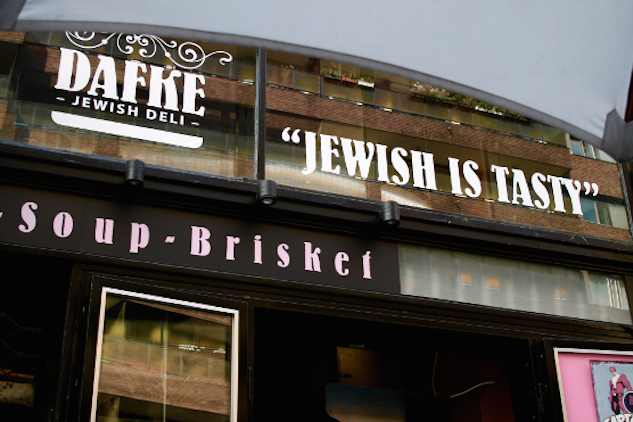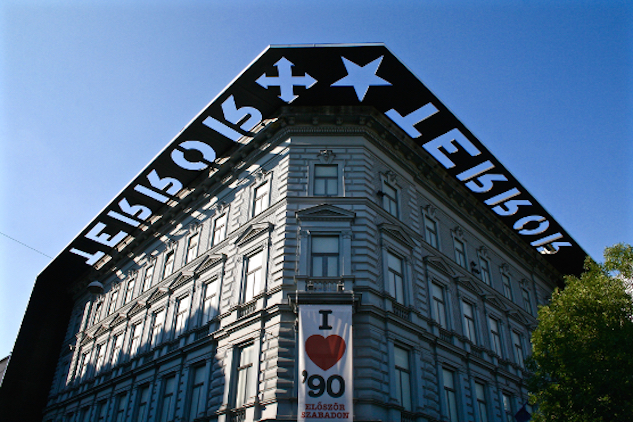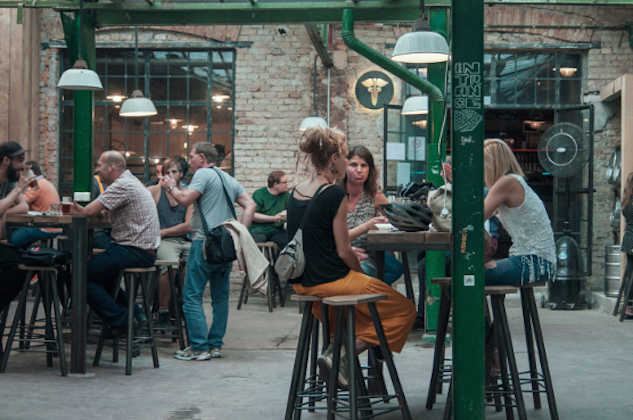With a population of around 1.7 million, Budapest is not a very big city as far as capitals go. Split down the middle by the Danube River, the Hungarian capital is made up of what had historically been three cities: Buda, Pest and Óbuda. The layout is similar to Paris’ Arrondissements, with a ring of 23 districts spiraling out of the historic center. Budapest is an eclectic mix of personalities and each district has its own. In the I District, you’ll find cobblestone streets leading to the famous Buda Castle, as well as hidden medieval and Ottoman relics. The Old Jewish Quarter in the VII District is brightened up by street art on the once-empty firewalls between the famous ruin bars and hipster cafes.
Most Hungarians speak English and Budapest is an easy city to navigate. The local currency will make you look like a millionaire as 1000 Hungarian Forints is worth around $4, and you might feel like one too since Budapest is one of the cheapest capitals in Europe (unless you’re earning Hungarian wages, that is).
Day One
Morning
Get up early and go to Café Gerlóczy in the V District. Try the Hungarian omelette (1,200HUF) made with spicy sausage, bacon and rings of hot green paprika, and bread made fresh on the premises. Enjoy your meal on the terrace populated with white linen-clad tables.
After breakfast, wander up Gerlóczy street and turn onto Semmelweiss street toward the Small Boulevard and walk the backstreets behind the National Museum into the Palace District. Filled with palatial apartments, locals walk their dogs on the tree-lined streets dotted with crumbling balconies, hidden courtyards and art galleries-cum-cafes. Formerly known as the Hungarian Latin Quarter, this part of the VIII District housed artists and writers in the early 20th century.

Photo: Luca Szalmas
Continue along the Small Boulevard to the Central Market Hall on the banks of the Danube next to the copper-green Liberty Bridge. Stop by the stalls under the wrought iron beams and take your time to smell the fresh paprika and cured meats and cheeses while watching old ladies stuff produce into overfilled shopping carts. Chances are you’ll be hungry by now, so head to the first floor and order a lángos with sour cream and cheese. Don’t feel guilty, just enjoy the deep-fried savory pastry, a classic example of Hungarian street food, which is hearty enough to keep you going for the rest of the day.
Afternoon
Hop on tram No. 2 for views of the Danube banks and the neo-gothic Houses of Parliament. At the end of the line, walk across the bridge or take tram 6 or 4 two stops and head over to the Lukacs Baths. With almost 200 caves formed by thermal water and a number of hot springs, Budapest has earned its “Spa Capital of Europe” title. Placards dating back over a century line the entrance thanking the spa for its curative properties. The Lukács is a local favorite, quieter than its rivals, where you’ll find a mix of patients from the adjoining hospital with thermal water prescriptions from their doctors and families enjoying the Jacuzzi beds and current bend in the outdoor wellness pool. However, if you want glimpse Budapest’s Ottoman past, then head next door instead to the 16th century Turkish Veli Bej Baths, supposedly the oldest and most beautiful in the city.
Evening
Take the No. 4 or 6 tram to Király Utca (street) for a dinner at Vintage Garden on Dob Street. This French-inspired bistro has a hint of Provence with rustic touches and dried lavender. While it’s not authentic Hungarian, the shabby chic design of its flaking walls offset by empty wrought iron birdcages showcases Budapest’s innovative taste for design.
Make the most of the VII District nightlife by exploring the famous ruin bars. Head up to Fogas Kert for a drink in a garden of a converted ruined house and sit under the circus tent with a view of the loose bulbs dangling from the trees. Do something different and try the latest trend in live theatre, a room escape game; Fogas Kert offers a few via ExitPoint Games, but almost every ruin bar has one and you can find dozens of them in apartments and cellars hidden across the city.

Photo: Jennifer Walker
Day Two
Morning
Start off in Madách Imre út with a Jewish breakfast at the Dafke Deli, where you’ll find a variety of chewy bagels. Their cheddar and cream cheese bagel (990HUF) is creamy and tangy, served with plenty of greens so you won’t feel guilty indulging. If you’re an experimental coffee lover, try the Jaffa Espresso made with orange peel, which is surprisingly refreshing.
Carry through the Jewish theme to the recently renovated, oriental style synagogue on Rumbach Sebestyén utca. From there, head to nearby Gozsdu Udvar, which serves as a lively cultural center. This network of connecting courtyards houses trendy restaurants and cafes, and sometimes street markets. However, its history isn’t as bright as it was part of Budapest’s Jewish ghetto from 1944 to 1945. A wall once segregated the district but now a memorial rests in its place, which you can spot through the bars at Kiraly utca 15. Include a visit to the Great Synagogue, as it’s the largest in Europe and the third largest in the world.
Afternoon
From the Great Synagogue, cross Deák Square and head up Andrássy Avenue near the National Opera House for lunch at Kantin. The three-course set menu (2,500HUF) offers modern interpretations of Hungarian dishes made with locally sourced ingredients. Try the piquant yet creamy Chicken Paprikás (or the vegetarian mushroom version).

Photo: Jennifer Walker
After filling up, walk a few blocks to the House of Terror museum. This memorial to the victims of the fascist and communist regimes also showcases 20th century Hungarian history with multimedia displays and video archives, and is more akin to an avant-garde art installation than your usual museum. Prepare for goose bumps, especially when you realize that the building itself was once used to detain, interrogate, torture and kill people who went against the regime.
Evening
Pop into Pizzica on Nagymez? utca. While good pizza in Budapest is hard to come by, a local who originally hails from Italy runs this small restaurant. You can expect excellent slices of pizza topped with torn fresh buffalo mozzarella or drizzled with truffle oil. It’s a curious batcave-esque hangout that plays alternative music and attracts an equally alternative crowd. A small gallery upstairs features the work of local artists.

Photo: Luca Szalmas
Grab the 4 or 6 tram to Corvin Negyed and go to Éleszt? (pictured above) on T?zoltó utca for a pint or three. This ruin pub in a former glassworks factory specializes in Hungarian craft beers, like Keser? Méz (Bitter Honey) and a malty black beer with chocolate and fruit notes called Fekete Erd? (Black Forest).
Late Night
Cross the Danube to A38, a former Ukrainian stone-carrier ship from 1968. The now concert hall and event space is perfect for a few drinks complimented by a concert. The concert calendar is eclectic, with everything from international acts like Amanda Palmer to quirky local bands. You might end up watching a weird Austrian industrial act perform in nappies and party hats, and you’ll probably love it.
To Stay
To get a feel for Budapest life, you can rent an apartment with Airbnb. Try to get a place in the inner VII or VIII District inside the Grand Boulevard.
If you want to splurge a bit, book a room at the art boutique hotel Brody House, located next to the gardens of the National Museum in the Palace District. Each room has been decorated by a local artist in a uniquely eclectic, shabby chic style that is very Budapest. Rooms range from $99-132.
Getting There
Travelers usually fly into Budapest Franz Liszt International Airport, which is well connected to most major cities in Europe via low cost airlines such as Wizz Air, Ryanair and easyJet. While there are no direct flights from the U.S., there are plenty of European airlines such as Air France, TAP Portugal, British Airways, Lufthansa that can connect U.S. destinations such as New York and Washington D.C. with Budapest.
Jennifer Walker is an Anglo-Hungarian former nuclear physicist turned writer based in Budapest, Hungary.